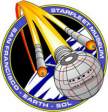 |
 |
23rd Century Carriers and Fighters
![]() Diagrams
Diagrams![]()
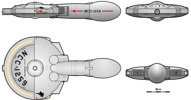 Swordfish class |
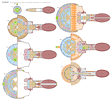 Swordfish deck plans, part 1 created by Allen Rolfes (see notes) |
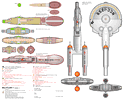 Swordfish deck plans, part 2 created by Allen Rolfes (see notes) |
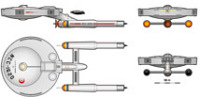 Al Burak class |
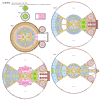 Al Burak deck plans, part 1 created by Allen Rolfes (see notes) |
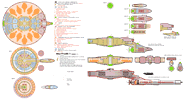 Al Burak deck plans, part 2 created by Allen Rolfes (see notes) |
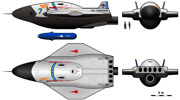 Penguin fighter |
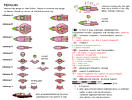 Penguin interior layout created by Allen Rolfes (see notes) |
 Penguin nose art |
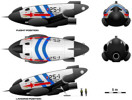 Puffin fighter |
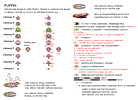 Puffin interior layout created by Allen Rolfes (see notes) |
 Puffin nose art |
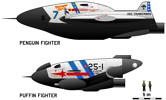 Penguin and Puffin |
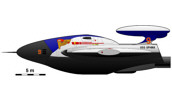 Penguin pathfinder |
![]() Scenes
Scenes![]()
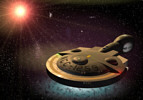 Swordfish 3D scene created by Skyhawk223 |
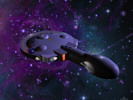 Swordfish 3D scene created by Skyhawk223 |
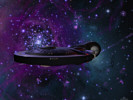 Swordfish 3D scene created by Skyhawk223 |
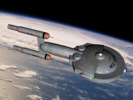 USS Swordfish refit created by Dávid Metlesits |
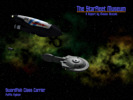 Swordfish class and Puffin created by Thomas Pemberton |
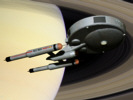 USS Al Burak created by Dávid Metlesits |
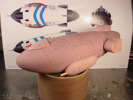 Puffin model built by Daniel Duna |
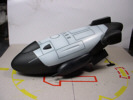 Puffin model built by Daniel Duna |
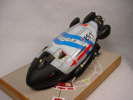 Puffin model built by Daniel Duna |
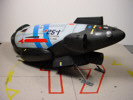 Puffin model built by Daniel Duna |
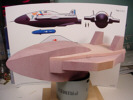 Penguin model built by Daniel Duna |
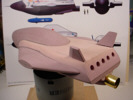 Penguin model built by Daniel Duna |
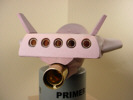 Penguin model built by Daniel Duna |
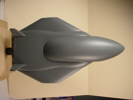 Penguin model built by Daniel Duna |
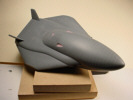 Penguin model built by Daniel Duna |
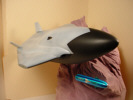 Penguin model built by Daniel Duna |
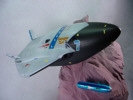 Penguin model built by Daniel Duna |
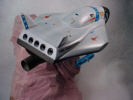 Penguin model built by Daniel Duna |
![]() History
History![]()
Al-Burak-class carriers and Penguin-class attack fighters entered service with Starfleet in 2232. This weapons system provided Starfleet with its first effective, long-range, carrier-borne strike capability in nearly three-quarters of a century. Al-Burak carriers were based on the Valley Forge-class cruisers, which were introduced in 2227. In contrast, the revolutionary Penguin fighters were made possible by dramatic advances in small matter/antimatter (M/AM) power plants in the 2220s.
Fighters and Carriers in the Earth-Romulan War
In 2158, the third year of the Earth-Romulan War (2156 to 2160) the United Earth Stellar Navy (UESN) introduced the Minotaur strike fighter and the Yorktown-class carrier. This weapons system, which combined ships with two different types of M/AM power source, allowed Earth forces to attack targets deep within Romulan territory. Later in the war, these ships spearheaded the offensives that directly threatened the Romulans' homeworlds and forced an end to the hostilities. Minotaurs were carried internally by Yorktowns into enemy territory on high speed runs (wf 3.9) lasting up to 5 weeks, then launched to attack Romulan sensor complexes and fleet concentrations with warp-capable, nuclear-tipped missiles.
Minotaurs were primarily powered by newly developed M/AM fuel cells, which were self-contained modules in which small quantities of deuterium and antideuterium annihilated each other at a low, fixed rate. Once a fuel cell was started, it would continue to function until its reactants had been depleted. Although mechanically simple and relatively safe, each of the 6 fuel cells carried aboard a Minotaur allowed only a single nearly straight warp jump of 100 au at wf 4.5. Therefore, Minotaurs were incapable of independent, M/AM-powered interstellar travel.
The fuel cell was admittedly less efficient and less tactically flexible than M/AM reactors, but was more advanced than any power source in service with the Romulans or, for that matter, the Klingons, both of whom used only deuterium reactors until the early 23rd century. Furthermore, these fuel cells did allow Minotaurs to be considerably smaller and require a far smaller crew than Comet-class cruisers, the smallest contemporary ship with a standard M/AM reactor. Most importantly, the Minotaur/Yorktown system was an extremely effective weapon that allowed the UESN to go on the offensive in the middle years of the Earth-Romulan War. Although several Yorktown carriers were inherited by the newly established United Federation of Planets' Starfleet in 2161, all were retired from service within 5 years.
Fighters and Carriers in the Early 23rd Century
In the first decade of the 23rd century, Federation engineers could look back at the first 50 years of M/AM-powered spaceflight with great satisfaction. Reactors designed by Earth and her allies were continuing to double in power output roughly every 15 years. As a result, Starfleet cruisers were becoming ever more capable, achieving greater speeds and ranges while carrying more extensive weaponry, sensors, and scientific equipment. Although both ships and reactors were also increasing in size and weight, these increases were not seen as necessarily disadvantageous and had not yet hampered performance or decreased fleet strength or readiness levels. Furthermore, technology analysts predicted that Federation reactors would continue to be superior to reactors fielded by any identified potential adversaries for two to three decades.
Because Starfleet was quite satisfied with the ever-increasing power of standard cruiser reactors, it had little interest in making smaller, less powerful reactors. A factor in this lack of interest was that Starfleet saw no need for M/AM-powered ships any smaller than the escorts and scouts already in service. The smallest of these ships displaced some 30,000 t, only slightly larger than the Daedalus-class ships of Romulan War vintage. Starfleet Command believed that any decrease in reactor size would necessitate decreases in reactor safety, power output, and reliability as well as decreases in ship size, performance, and functionality. Rather than smaller, less-capable vessels, what Starfleet desired were larger, more powerful ships to patrol and defend the ever-expanding borders of the Federation. Furthermore, Starfleet engineers likely believed, as did most engineers of the time, that small reactors would be too expensive and too technically complex to manufacture on a large scale.
Despite its apparent determination to build a fleet entirely of large, powerful cruisers, Starfleet continued to maintain a small but significant force of fighter craft, operated from both carriers and cruisers of various size. Indeed, Starfleet still recognized that a pursuit/attack air group could perform some tasks more economically and, often, more effectively than several light cruisers. In particular, fighters were extremely effective in environments, such as in orbit or within solar systems, where agility and maneuverability were more important than speed, range, or endurance. Fighters were also valuable when a superiority in the number of ships was more important than a superiority in total firepower. In addition, fuel-cell-powered fighters, although of limited speed and range, were relatively simple to maintain and operate. For example, fuel-cell fighters could be carried by Starfleet transports or based at space stations and be launched with as little as 15 minutes' warning. Such fighters were ideal for defense against pirates, smugglers, and commerce raiders.
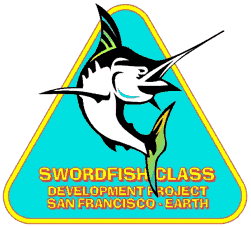
To transport and launch fighters, Starfleet constructed several classes of carrier in the early 23rd century, the best known perhaps being the Swordfish class (NCC-1259 to NCC-1278) of 2207. These 190-m-long carriers, based on the Lancaster-class cruiser, were unusual for the era in having a single midline nacelle, a configuration common in ships serving in the Earth-Romulan War. This configuration was chosen to save weight and to prevent outboard nacelles from interfering with the launching and recovery of fighters from their bays in the rear quarters of the primary hull. Ships with nacelles mounted near the midline are, of course, less maneuverable at warp than ships with outboard nacelles, but Swordfish were not expected to require high maneuverability. The fighter bays were located in a dorsal mound built out to the full diameter of the rear half of the primary hull. (This configuration was further developed for use in primary hull-only starships, such as the Pyotr Velikiy-class heavy cruiser of 2242 and the Miranda-class cruiser of 2265.) Each Swordfish had an air group of approximately 20 fighters and attack craft, either sublight (powered by fusion reactors) or warp capable (powered by M/AM fuel cells).
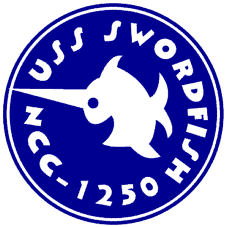
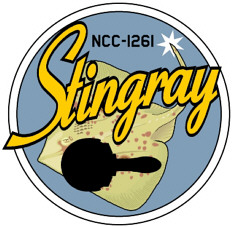
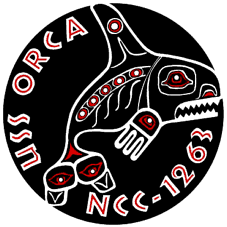
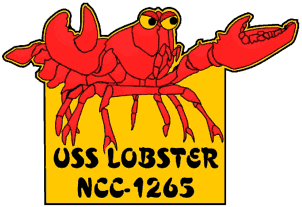
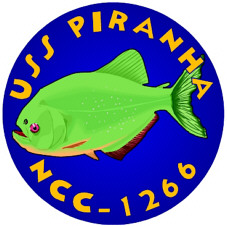
The most advanced fuel-cell-powered warp fighter of the early 23rd century was the Puffin. Introduced in 2203, Puffins saw extensive service on most cruisers and carriers active during that period. Because Puffin was intended only for exoatmospheric flight, it had no wings and a few aerodynamic control surfaces useful only for semicontrolled, emergency planetary descent. As a result, the 19-m-long Puffins bore a strong resemblance to small, fat fish, such that they were often called "Guppies" or "Minnows" by their crews. The warp drive system comprised 6 M/AM fuel cells in the rear fuselage and a Titus Aerospace Dragonette I nacelle protruding from below like a large exhaust pipe. Puffins were highly maneuverable, as evidenced by the large variable-direction thrust nozzles on the nose and rear fuselage. The pilot and co-pilot/weapons officer, sat far forward in the fuselage with vision provided by armored viewports. Like most other fuel-cell-powered fighters of the era, Puffin was not designed to face strongly shielded and heavily armed cruisers, so carried less powerful weapons effective against lightly armed pirates, smugglers, and enemy fighters. These weapons included cheek-mounted laser cannons powered by a dedicated fusion reactor and short-range atomic minimissiles launched from a rotary drum in the mid-fuselage.
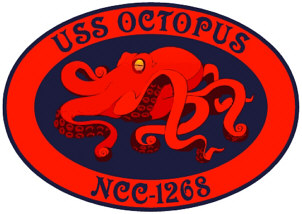

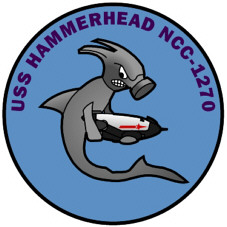
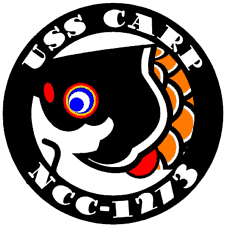
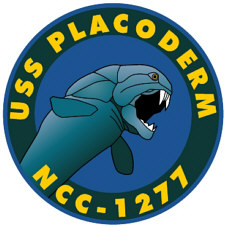
Although the fuel cells carried by Puffins were significantly more advanced than those used during Earth-Romulan War, they continued to have all the limitations inherent in this technology. First, fuel cells were still far less powerful and efficient than standard M/AM reactors. Each of the 6 fuel cells could power the Puffin to a cruising speed of wf 5.0 for approximately 1 hour or a high speed dash of wf 6.7 for some 15 minutes. However, contemporary cruisers had maximum speeds that were already surpassing wf 6.0. Second, because each fuel cell included a small, fully shielded reaction chamber, magnetic antimatter containment bottles, and related machinery, each fuel cell was associated with considerable redundant weight, which impaired performance at both warp and sublight speeds and decreased the fighter's ability to carry weapons, sensors, and crew. Third, because fuel cells were either operating at full power or not operating at all, fighters had little tactical flexibility. (Puffin's fusion reactor could not power the warp drive.)

Although Starfleet continuously operated small, warp-capable craft off dedicated carriers from the end of the Earth-Romulan War until the 2230s, the inflexibility of the fighters' warp power plant severely limited the situations in which they could be used. Fighters could not loiter at warp speed or patrol large areas of space and could not effectively attack ships other than similarly powered fighters or other small ships. Their only advantages to compensate for their limited speed, combat radius, and weapons payload were their ability to evade sensors, owing to their small size, and their availability in large numbers. Furthermore, their carriers were usually slow and poorly armed and could not operate safely in hostile space without an escort of light cruisers.
The operational limitations of fuel-cell-powered fighters are illustrated by a mission involving the Swordfish-class carrier USS Narwhal (NCC-1264) in 2224. Narwhal had been dispatched to investigate losses of merchant ships in the Kosmosibirsk sector but was not accompanied by either scouts or cruisers because Orion pirates recently reported to be operating in the area were thought responsible. Orion pirates at that time were technologically backward and equipped with only primitive fusion- or even fission-powered cruisers, which were certainly no match for M/AM-powered fighters and carriers. However, instead of Orion pirates, USS Narwhal found a group of rogue Klingons operating a stolen D4-class cruiser. Although the D4 was technologically unsophisticated by Federation standards, it was extremely large (displacing twice as much as a Lancaster cruiser), heavily shielded, and nearly as fast as a Puffin. The Puffins made numerous attacks on the D4 with their atomic-tipped missiles, but were brushed aside as the Klingon cruiser slowly advanced to threaten the carrier. Rather than risk destruction and the stranding of its air wing in hostile space, Narwhal made a strategic withdrawal to Starbase 27, from which two Kestrel-class light cruisers (USS Mononykus, NCC-1432, and USS Shrike, NCC-1434) were dispatched to deal with the rogue Klingons.
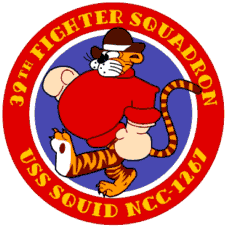
Although Starfleet did operate a limited number of dedicated carriers in 2210, most fighters were deployed from multipurpose cruisers, such as those of the Lancaster class, which had an air group of 10 small fighters. This trend of combining the functions of a fighter carrier and fighting cruiser in a single ship reached a rather unsatisfactory climax with the Quetzalcoatl-class semidreadnought (NCC-1280 to 1284) of 2215. These immense ships had a much larger air group (usually including 60 fighters) and more extensive weaponry than did Lancaster cruisers and were designed to control vast volumes of interstellar space. However, because available warp-drive systems were inadequate to propel this quarter-million-ton behemoth to speeds high enough to compensate for the small combat radius of its fuel-cell-powered air group, only 5 units of the projected 20-ship class were completed. Starfleet never again attempted to combine the roles of fighter carrier and heavy cruiser in a single ship. Because of the continuing shortcomings of fuel-cell-powered small craft, carriers would not serve as effective strike or antiship weapons for another 20 years.
The Development of Small M/AM Reactors
Before the Earth-Romulan War, interstellar travel had been slow and expensive. Crossing the 5 ly between neighboring star systems in fusion-reactor-powered starliners often took the better part of a year. However, with the end of Starfleet's monopoly on M/AM reactors in the early 2160s, rapid interstellar travel became available to civilians. At first, all privately owned reactors were newly built and could be purchased by only the largest, wealthiest corporations. Then, as surplus first- and second-generation military reactors became available with Starfleet's postwar build-down, interstellar commerce and travel exploded across Federation space. Because of the great size of these early reactors, the ships carrying them also remained large and expensive. For this reason, many civilian engineers began to wonder whether much smaller M/AM reactors, perhaps as small as 100 t, could be built. However, Starfleet showed little interest in such small reactors, much as governments on 20th century Earth had shown little interest in building nuclear reactors for surface ships or submarines displacing less than 10,000 tons.
In 2221, Dr. Helene Tarkington, a young engineer employed by Earth's Hawker-Ludovico Corporation, embarked on a private project to design just such a small M/AM reactor. Working with computer simulations and a military-surplus fuel cell, she began to tinker with reactant-injection rates, reactor chamber geometry, ignition lens, and tuning matrixes. When the project became too expensive and dangerous for Dr. Tarkington to continue on her own, she persuaded her superiors at the Hawker-Ludovico Corporation, a company that had long been associated with hulls and fusion reactors, that small M/AM reactors would be "the next big thing" in starship engineering. Within three years, a prototype commercial reactor, the Hawker-Ludovico HT-1, weighing approximately 150 t, was running on a test stand at Hawker-Ludovico's research station at Hellas Planitia, Mars. The prototype reactor had a peak power output only twice as great as that of contemporary fuel cells but could operate at this level for days at a time.
However, the HT-1 was never to see commercial application. News of its success had reached Starfleet, which apparently believed that only it should operate such small reactors. "If such a reactor would happen to fall into the wrong hands," an unidentified Starfleet admiral once said, "the implications for Federation security would be dire indeed." In 2225, Hawker-Ludovico was persuaded to enter an agreement with Starfleet in which all materials related to small reactors were to be considered Federation secrets and Starfleet was to have exclusive use of the small reactors for 10 years. In return, Hawker-Ludovico would be generously subsidized by the Federation Council and would be free to commercialize its small reactors after the contract period.
After several decades of studiously avoiding any development of small-craft reactors, why did Starfleet suddenly decide that a monopoly on such reactors was essential for the defense of the Federation? A possible explanation is that before Dr. Tarkington and Hawker-Ludovico succeeded in producing the HT-1, Starfleet had genuinely believed that such a reactor was technologically unfeasible. On the other hand, perhaps Starfleet believed that such a reactor was possible, but knew that a private company could develop one far more cheaply and quickly than could Starfleet itself owing to its already bloated bureaucracy.
Technologies and Tactics in Fighter Development
The more likely reason for Starfleet's extreme interest in the revolutionary HT-1 reactor was that the recent appearance of several key technologies had finally allowed small, carrier-borne craft to be effectively used in antiship operations. The first of these technologies was, of course, the HT-1 reactor. A small ship built around this reactor would be extremely fast, highly maneuverable, and have sufficient range to be launched from carriers well beyond the range of high-resolution sensors or antiship missiles then operated by Starfleet or potential threat forces. The fighters could, therefore, attack targets without their carriers being put in harm's way.
A second technology was the photon torpedo, which had been introduced in 2206 with the Asia-class cruiser (NCC-945). Early versions of the photon torpedo were relatively slow, with short ranges and inaccurate targeting systems. In addition, submaximal warhead detonations, caused by asymmetrical reactions of the M/AM warhead, occurred nearly one third of the time under field conditions. Even more alarming was the possibility of premature detonation of the warhead soon after launch or while still aboard the ship. While no Starfleet vessels were destroyed in this manner, there were several instances aboard Lancaster-class and Asia-class cruisers in which photon torpedoes had to be jettisoned to prevent catastrophes. However, by the mid-2220s, warhead stability and reliability had improved considerably and allowed the photon torpedo to become the standard long-range antiship weapon of Starfleet.
The use of fighters as platforms for launching photon torpedoes would provide Starfleet with several distinct advantages. As the maximum speeds of both ships and torpedoes climbed during the early 23rd century, the problems of targeting errors became more acute. However, if the torpedo could be launched from a point closer to the target, flight time could be decreased and accuracy could be increased. Because Starfleet was hesitant to bring their very expensive cruisers closer to the target and risk damage or destruction from enemy return fire, they sought another, "more expendable" launch platform that could be exposed to the enemy at less cost. Launching torpedoes from fighters rather than large cruisers would fulfill such a goal, as the loss of a single fighter, along with its crew of 4 or 5, would certainly be less costly than the loss of a 30,000-t light cruiser with a crew of hundreds. A second advantage is that a squadron of 10 fighters each displacing 3,000 t would be less likely to be detected by enemy sensors than would a single torpedo-armed light cruiser displacing 30,000 t. As a result, the fighters would be able to launch their torpedoes closer to a target without provoking a defensive response. A third advantage is that using fighters would allow larger numbers of torpedoes to be fired simultaneously along multiple vectors, an attack mode that would be more likely to overwhelm an enemy's defenses. (Other multivector attack methods, including such laughable "solutions" as ships that could be separated into several semiautonomous parts, each with its own M/AM reactor, had proven impractical.) Although cruisers carried many more torpedoes, they could only be fired singly or in pairs and only along a single vector from the twin torpedo launchers standard at the time. As a final advantage, fighters, being more maneuverable at both warp and impulse speeds, could be sent to fight in environments where larger cruisers could not, such as within asteroid fields, planetary orbits, and other "shallow water" situations.
Of course, launching torpedoes from fighters had certain disadvantages as well. Unlike cruisers, which carried 24 to 120 photon torpedoes, fighters would likely carry at most 4 or 5 torpedoes. Once these torpedoes had been fired, the fighter would have to return to its carrier or base for rearming. Fighters also do not carry the powerful sensors of cruisers, so they would have to rely to a greater extent upon the torpedo's own on-board targeting system or launch at a point much closer to the target. Another question was whether launching from fighters would be as accurate as launching from the 10-m-long acceleration tubes on board cruisers. Experience with fuel-cell-powered warp fighters suggested that fighters were much less accurate launch platforms than were cruisers because the torpedo's launch speed relative to normal space was considerably lower. Indeed, in early tests of launches from fighters in the 2210s, torpedoes were occasionally outrun by accompanying cruiser "chase ships."
Development of the Penguin Fighter
Work on designing a fighter around the Hawker-Ludovico HT-1 reactor started at Earth's San Francisco Yards in mid-2225. Starfleet Command envisioned a ship some 25 m in length, which was significantly larger than extant fighters, but was considered the minimum size able to carry both the HT-1 reactor-based warp drive and a photon torpedo launch system. The fighter, to be called the Penguin, was to be carried internally by the new Al-Burak-class carrier, derived from the soon-to-be-introduced Valley Forge class, which was also under development at San Francisco.
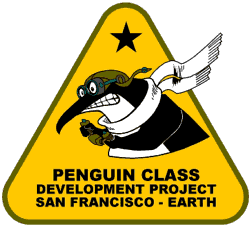
While the Hawker-Ludovico HT-1 reactor was dramatically smaller than any previous true M/AM reactor, Starfleet believed that it was still not small or powerful enough to meet its needs. If the reactor was to power a ship faster than present cruisers (at least wf 7.6) but displacing no more than 1,000 t (allowing 10 to be carried by the proposed Al-Burak class), it would likely have to shed a further 50% of its weight while increasing power output by 200%. Reactor designers, who usually had the luxury of nearly unlimited size and weight should extra components be needed to ensure the safe and efficient operation of a reactor, were now struggling to miniaturize a type of reactor that less than 75 years earlier had weighed some quarter million tons and spread across 5 hectares of the southern Martian lowlands. To ensure that size limitations were met, redundancy and crew safety would likely have to be compromised, to a certain extent. However, since these reactors were not designed to operate across interstellar distances, the designers crossed their fingers and hoped for the sake of Penguin's crews that their compromises were not a deal with the devil.
Even with such a weight reduction, integrating a powerful M/AM reactor with such a small ship would be a considerable challenge. Not since the early days of the Earth-Romulan War would a reactor account for such high percentages of a ship's total displacement and volume. Penguin would be little more than a reactor attached to a warp nacelle. If room were available for a crew compartment, sensors, and weaponry, the designers would likely consider themselves fortunate, indeed. In addition, such problems as heat dissipation and reactor shielding had to be addressed and solved.
By the spring of 2228, a new reactor based on the HT-1 had been mounted on a testbed vehicle and was undergoing trials at the Starfleet's Jupiter Flight Range. Dubbed SSWR-XII-B, the new reactor successfully met Starfleet guidelines for both power output and weight. However, early test flights were generally successful but revealed a troubling tendency for power output to fluctuate by some 15% at low warp speeds. The problem was eventually found to be inherent to all fighters and other craft with far-right-shifted power utilization curves. The reactors of such ships are intended to operate at near-peak levels for relatively short periods of time; accordingly, they have trouble maintaining constant output at extremely low fractions of these peak levels. The fluctuations could have been smoothed out somewhat or even eliminated by installing either a second reactant flow governor specific for low power levels or a more restrictive oscillation dampening buffer on the main plasma conduit or both; however, these solutions would have decreased peak power output and maximum speeds by an estimated 5%. Since such decreases were not acceptable for a high-speed fighter, pilots were simply warned to exercise caution within the low-speed section of the flight envelope.
As flight testing of the reactor continued at Jupiter, the Penguin spaceframe was taking its final form in San Francisco. Penguin was slightly more than 25 m long, not including its nose probe. The thick main fuselage, 6.6 m tall, tapered quickly to a rather blunt nose that housed the targeting and navigational deflectors under a radiolucent housing. At midbody was a dorsal hump to accommodate the four-man crew (pilot, co-pilot/navigator, weapons officer, and engineer) in a jettisonable compartment, which was accessed through a rear hatch. The ventral fuselage featured a weapons bay for two 9.5-m-long "Blue Meanie" long-range photon torpedoes. A standard torpedo launcher was located in the right wing root, and a miniphaser cannon was located in the left wing root. The 65-ton SSWR-XII-B reactor was to occupy the forward part of a 3-m-thick engineering deck extending rearward from the main fuselage. At the rear of the engineering deck was the impulse drive system, which exited rearward through 5 circular thrust ports. The single warp nacelle, an 8-m-long Dragonette IV unit, was buried in the rear fuselage below the engine deck with only its rear intercooler assembly visible. For trans/interatmospheric flight and emergency re-entry, the lower fuselage was covered with a heat-resistant coating. Short wings and twin vertical stabilizers offered some measure of aerodynamic control.
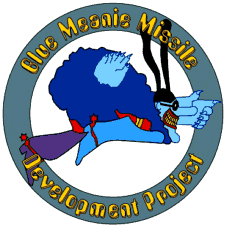
In October 2228 Penguin prototype hull No. 1 was mated to a new SSWR-XII-B reactor and transported to the Jupiter flight range. Only one month into the flight testing program, the Penguin had already reached wf 8.4, nearly twice as fast as Valley Forge, then Starfleet's fastest cruiser class. However, this speed could only be sustained for approximately 2 hours. Reactant exhaustion testing revealed that Penguin had an extreme unrefueled range of only 2 ly at a cruising speed of wf 6.2 (roughly 3 days). Clearly, Penguin was not an interstellar vessel.
In July 2230, the first Penguin fighter rolled off the assembly line at Starfleet's Shuttlecraft Plant #3 in Earth orbit. The first Penguin unit, the 23rd Attack Squadron, an old Puffin unit from USS Hammerhead (NCC-1270), began training flights in November 2230 at Europa off USS Barracuda (NCC-1260) and USS Stingray (NCC-1261), two Swordfish-class carriers modified to operate the larger Penguin fighters. The squadron's pilots were quite pleased with the Penguin's speeder-like performance at moderate to high warp speeds but felt that Penguin handled at impulse "like a brick in molasses." This criticism was expected, since Penguin had been designed for attacks at warp speed rather than for operations at sublight speeds. However, later versions of Penguin did have more powerful impulse engines.
Development of the Al-Burak-class Carrier
Now that the Penguin fighters were ready, all Starfleet needed now were carriers to transport and launch them. Because only 5 Penguins could be carried by refitted Swordfish, a new class of carrier had to be developed. This new carrier, the Al-Burak class, was named for the heavenly steed upon which the Muslim prophet Mohammed made journeys of incredible speed. Starfleet's Al-Burak, however, was derived from the Valley Forge class cruiser, which had entered service in August 2227. The Valley Forge class had already served as the basis for the Belleau Wood-class assault transports (NCC-1547 to NCC-1566), which were designed to enable Starfleet to land Marines and their equipment via shuttlecraft rather than matter transporter. The modifications that had transformed the basic Valley Forge design into the Belleau Wood class were extensive but straightforward. They involved doubling the height of the primary hull disc to four decks to make room for connected shuttlecraft bays at the four quarters. A doubled primary hull was also used for Al-Burak, but the crew spaces and command centers were placed forward of the disc center so that a shuttlebay could be placed across the entire width of the center of the primary hull. This space, some 100 meters at its widest, could accommodate 12 fighters the size of Penguin. Al-Burak's "forward-leaning" bridge configuration was based on that of the experimental cruiser USS Bonaventure (NCC-1028). Instead of the 128-m-long "queen-bee" secondary hull of Belleau Wood, necessary to house the extremely large assault shuttles and heavy armor of a Marine brigade, Al-Burak had an extremely small secondary hull holding only the navigational deflector, the M/AM reactor, and warp drive assembly.
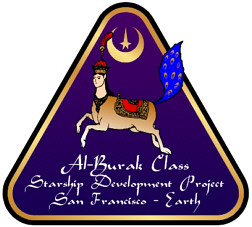
Al-Burak and Penguin Service History
USS Al-Burak (NCC-1520) was commissioned in January 2231, just 8 months after the Belleau Wood class. The 23rd Attack Squadron transferred to their new home in June 2231 and was officially returned to operational status in September 2231. Within one year, Penguin squadrons had been formed on an additional three ships, which along with USS Al-Burak, were sent to serve with the Eighth Fleet along the Klingon-Federation border or the Twelfth Fleet along the border with the Kzin. The first Penguin unit to see action was the 44th Attack Squadron aboard USS Tiamat (NCC-1522), which destroyed a Kzinti fleet staging area in the Monaba sector in January 2233.
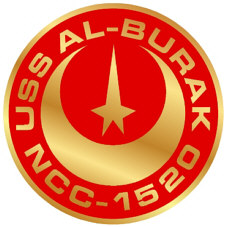
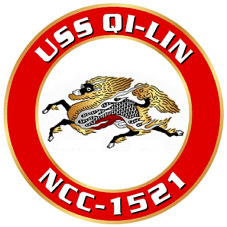
Because of their greater speed, range, and firepower, Penguins could perform many roles impossible for earlier classes of fighter. Chief among these was the role for which Penguin had been designed—long-range attack. Penguins would routinely be carried to within 20,000 au, or 0.33 ly, of their targets by Al-Buraks at a speed of wf 5.6, then be launched to cruise for 10 hours at wf 6.2 to within 1,000 au of the target. They would then make final attack runs at speeds of wf 8.4 or better and launch their "Blue Meanie" torpedoes 10 to 100 au from the target. At such launch speeds, torpedoes could attain velocities as high as wf 10 and reach a target in 5 to 50 seconds. For targets of particularly high value, a squadron of Penguins could simultaneously fire 24 extremely fast, extremely powerful photon torpedoes along 12 different vectors, an attack that, given the state of antitorpedo defenses, few enemies were likely to withstand.
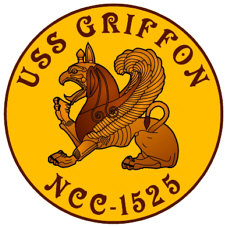
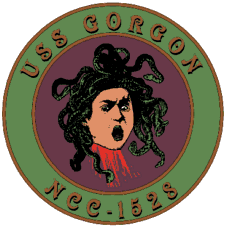
Because Penguins carried only a small-diameter P7-A4 targeting array, they often were accompanied on attacks by specialized "pathfinder" Penguins that carried long-range sensor pods in their weapons bay instead of photon torpedoes or had a special omnidirectional sensor array mounted externally above the rear engineering deck. Such specially equipped Penguins could acquire and track multiple targets at far greater distances than could ordinary Penguins; target information would then be passed on to each Penguin in an attack squadron, and then to the targeting systems of each torpedo. Alternatively, Penguin attacks could be guided by specially modified "eye in the sky" Kestrel-class light cruisers with sensors of even greater range and resolution.
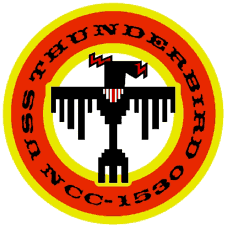

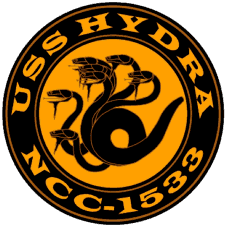
Another role better performed by Penguins was fleet defense. Although their range was much less than that of cruiser-type starships (which was essentially unlimited), a Penguin could maintain defensive station on the fringes of a fleet for several days at a time before having to return to the carrier for refueling and replenishment. With a cruising speed of wf 6.2, Penguins had no trouble keeping pace with task forces or civilian or military convoys, which usually had a cruising speed no better than wf 5.5, and usually substantially less. By maintaining a defensive perimeter several hundred au beyond the body of the main fleet, Penguins could identify and see off any potential attackers well before they could pose any danger.
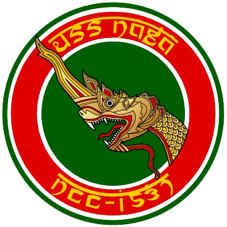
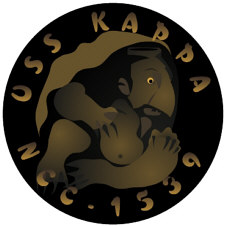
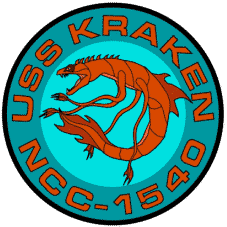
A third role performed by Penguin fighters was reconnaissance. Although their radius of action was only 1 ly, this was often more than enough for enemy defenses to be probed and for sensor drones to be launched for silent journeys deeper into enemy space. Penguins were capable of speeds exceeding those of many enemies' missiles and could therefore evade defenses in areas of greatest danger. Easily avoiding detection because of their small size, Penguins could often slip across even the most well-monitored borders, then wait silently as enemy fleets were scanned by the passive sensor equipment in their weapons bays. After attaching unmanned sensors to a convenient asteroid or releasing them into interstellar space, the Penguin would creep back across the border and return to its carrier waiting in Federation territory.
Penguin fighters launched from Al-Burak carriers served Starfleet years as antiship strike craft, defensive sentries, and reconnaissance and scout ships for more than 20 years. However, by the late 2250s, the technological advantages represented by Penguins began to disappear. In particular, sensors, missiles, and beam weaponry fielded by the Klingons and other adversaries had improved to such an extent that even the small, fast Penguins had considerable difficulty reaching a target without drawing withering defensive fire. Furthermore, other powers had developed measures specially designed to counter Penguins, including sensor pickets and fighter craft operating in hunter-killer teams with ships carrying long-range sensors. Finally, reactors for small ships failed to increase in power as quickly as did standard reactors for larger ships. For these reasons, by the mid-2260s, the large cruiser, as represented by the powerful Constitution class, had regained its traditional place as the primary antiship weapon of Starfleet.
Although carrier-borne fighters no longer played a central antiship role in Starfleet, the reactors designed for them continued to have an enormous impact. After fulfilling the contractual obligations to produce small reactors solely for Starfleet for 10 years, the Hawker-Ludovico Corporation began to produce the HT-4 reactor, a further refinement of Dr. Tarkington's original reactor, for use in civilian craft in 2235. The HT-4 was quickly embraced by numerous ship manufacturers, who constructed several hundred thousand small craft with the new M/AM reactors in the first years after the decade-long embargo. As the production of small reactors was exposed to market forces, reactor power output quickly increased even as reactor size decreased. By 2250, ships as small as Penguin had become true interstellar starships. The HT series of reactors and later reactors based on them continue to power Federation shuttlecraft and other small ships in the late 24th century.
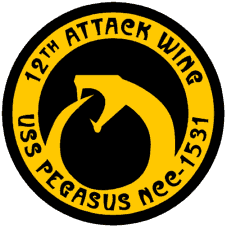
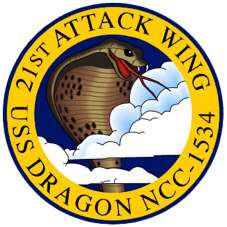
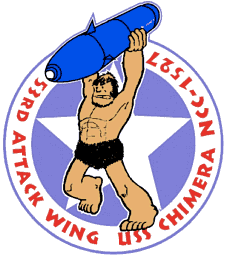
The Swordfish-class carrier USS Coelacanth (NCC-1272), the Puffin-class fighter Spirit of St. Louis (#327), the Al-Burak-class carrier USS Naga (NCC-1537), and the Penguin-class fighter Chilly Willy (#99) are on display at the Starfleet Museum.
![]() Commissioned Swordfish-class Ships
Commissioned Swordfish-class Ships
![]()
| USS Swordfish NCC-1259 USS Barracuda NCC-1260 USS Stingray NCC-1261 USS Cachalot NCC-1262 USS Orca NCC-1263 USS Narwhal NCC-1264 USS Lobster NCC-1265 USS Piranha NCC-1266 USS Squid NCC-1267 USS Octopus NCC-1268 |
USS Alligator NCC-1269 USS Hammerhead NCC-1270 USS Manatee NCC-1271 USS Coelacanth NCC-1272 USS Carp NCC-1273 USS Trilobite NCC-1274 USS Grampus NCC-1275 USS Cuttlefish NCC-1276 USS Placoderm NCC-1277 USS Walrus NCC-1278 |
![]() Commissioned Al Burak-class Ships
Commissioned Al Burak-class Ships
![]()
| USS Al-Burak NCC-1520 USS Qi-Lin NCC-1521 USS Tiamat NCC-1522 USS Cyclops NCC-1523 USS Garuda NCC-1524 USS Griffon NCC-1525 USS Manticore NCC-1526 USS Chimera NCC-1527 USS Gorgon NCC-1528 USS Basilisk NCC-1529 USS Thunderbird NCC-1530 |
USS Pegasus NCC-1531 USS Centaur NCC-1532 USS Hydra NCC-1533 USS Dragon NCC-1534 USS Lamia NCC-1535 USS Sphinx NCC-1536 USS Naga NCC-1537 USS Satyr NCC-1538 USS Kappa NCC-1539 USS Kraken NCC-1540 |
![]() Swordfish-class Specifications
Swordfish-class Specifications
![]()
Standard displacement: 132,907 t
| Overall | 1° Hull | 2° Hull | Nacelles | |
| Length [m] | 189.93 | 105.60 | 38.52 | 50.63 |
| Beam [m] | 100.36 | 100.36 | 23.37 | 31.27 |
| Draft [m] | 52.65 | 25.98 | 23.37 | 31.27 |
Crew complement: 290 (45 officers + 245 crew)
Weapons: 1 Type V phaser turret
Embarked craft: 12 Puffin-class fighters, 8 fighter/scouts, 2 light cargo/personnel shuttlecraft, 4 personnel shuttlepods
Warp drive: SSWR-VIII-A spherical cavity M/AM reactor with 1 Mammoth nacelle
Velocity: wf 4.5, cruise; wf 5.9, supercruise; wf 6.1, maximum
Units commissioned: 20
![]() Al Burak-class Specifications
Al Burak-class Specifications
![]()
Standard displacement: 156,114 t
| Overall | 1° Hull | 2° Hull | Nacelles | |
| Length [m] | 245.00 | 117.90 | 65.87 | 137.10 |
| Beam [m] | 114.30 | 114.30 | 14.71 | 12.70 |
| Draft [m] | 42.93 | 28.69 | 14.71 | 12.70 |
Crew complement: (50 officers + 250 crew)
Weapons: 2 Type VI phaser turrets (1 × 2 mount)
Embarked craft: 10 Penguin-class fighters, 2 medium personnel shuttlecraft, 4 personnel shuttlepods
Warp drive: SSWR-XI-A spherical cavity M/AM reactor with 2 Merlin II nacelles
Velocity: wf 5.6 cruise; wf 6.8, supercruise; wf 7.1, maximum
Units commissioned: 21
![]() Puffin-class Specifications
Puffin-class Specifications
![]()
Displacement: 435 t
Overall length: 19.40 m
Beam: 7.05 m
Draft: 6.24 m
Crew complement: 3
Weapons: 2 Type 5 laser cannons (fixed mounts), 2 missile launchers with 20 Hothead missiles
Warp drive: 6 × 56K M/AM fuel cells with 1 Dragonette I nacelle
Velocity: wf 5.0, cruise; wf 6.7, maximum
Units built: 503
![]() Penguin-class Specifications
Penguin-class Specifications
![]()
Displacement: 755 t
Overall length: 25.80 m
Beam: 13.52 m
Draft: 6.61 m
Crew complement: 4
Weapons: 1 Type VI phaser cannon (fixed mount), 1 torpedo tube with 5 Mark IIc photon minitorpedoes, 1 drop bay with 2 Mark IIIa photon torpedoes
Warp drive: SSWR-XII-B spherical cavity M/AM reactor with 1 Dragonette IV nacelle
Velocity: wf 6.2, cruise; wf 8.1, supercruise; wf 8.4, maximum
Units built: 311
![]()